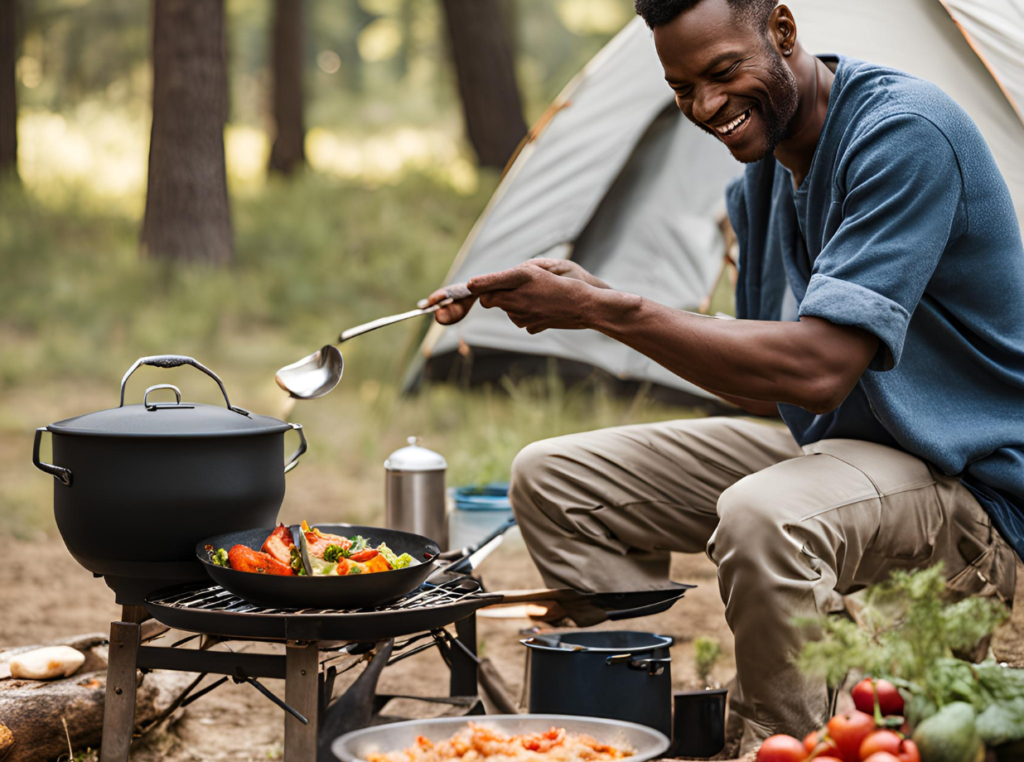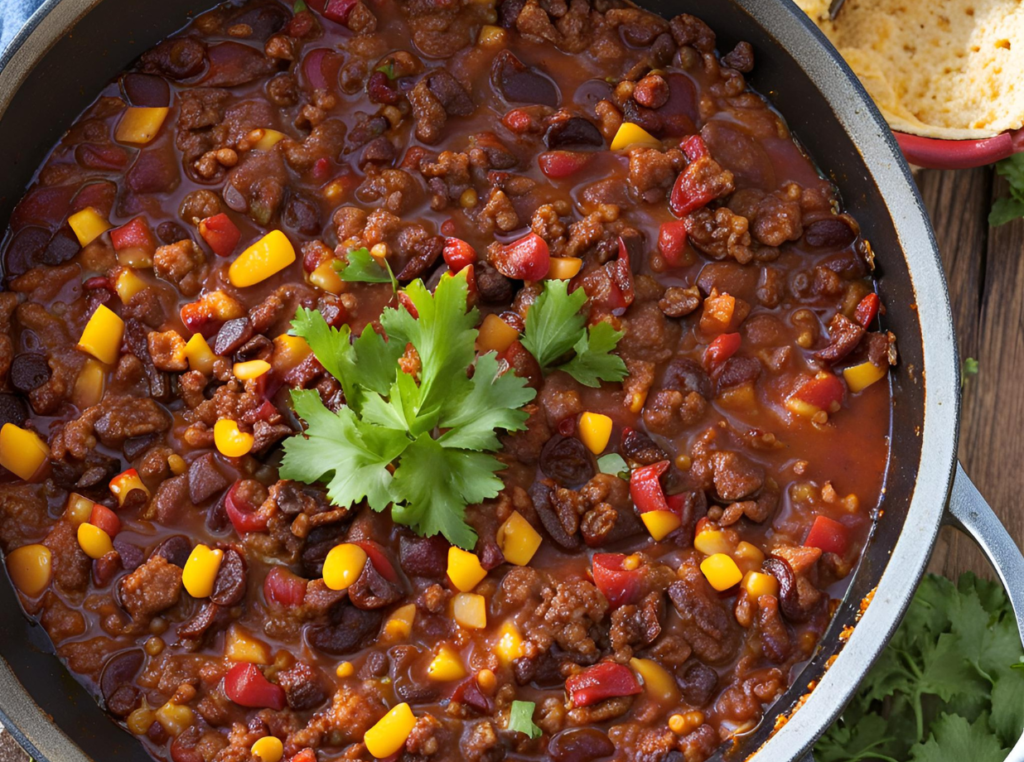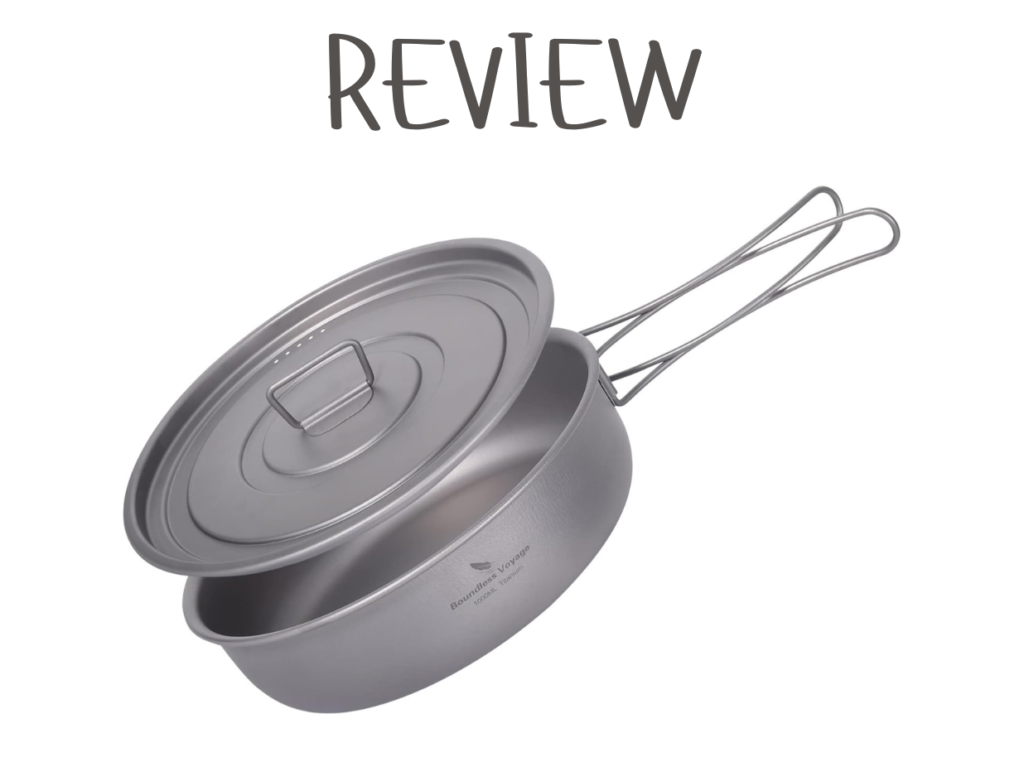Ever found yourself standing in front of a perplexing array of camping cookware, wondering if you’re just supposed to guess which one works best with your camping stove? Fear not! Choosing the right cookware for your outdoor culinary adventures shouldn’t evoke the same level of anxiety as deciding which Netflix show to binge-watch next.

Why Does Choosing the Right Cookware Matter?
Camping trips are all about getting away from the chaos and reconnecting with nature. But nothing brings you closer to civilization than realizing you’ve brought the wrong pan for your camping stove and now your dinner resembles something plastered on Picasso’s canvas. The right cookware not only ensures a good meal but also makes your cooking experience easier and much more enjoyable.
Know Your Camping Stove
Types of Camping Stoves
Before we even touch the subject of cookware, let’s talk about those fancy contraptions known as camping stoves. If you’re the proud parent of a brand-new camping stove (or are contemplating becoming one), you need to know there are various types, each with its quirks and preferences for cookware.
| Type | Description | Preferred Cookware |
|---|---|---|
| Canister Stoves | Lightweight, easy-to-use stoves that run on pre-pressurized canisters. Great for backpacking. | Lightweight pots and pans, aluminum, and titanium |
| Liquid Fuel Stoves | Stoves that use white gas or other liquid fuels. They are reliable in cold weather and high altitudes. | Durable cookware, stainless steel, and cast iron |
| Wood-Burning Stoves | These stoves use twigs, pine cones, and other natural materials to produce flames. | Heavy-duty cookware, stainless steel, and cast iron |
| Alcohol Stoves | Powered by denatured alcohol, these stoves are lightweight but less powerful. | Lightweight and small cookware, aluminum, and titanium |
| Solid Fuel Stoves | Small stoves that burn solid fuel tablets, great for emergency situations or ultralight backpacking. | Lightweight cookware, aluminum, and titanium |
Features to Look for in a Camping Stove
When you’ve got your camping stove sussed out, it’s time to give it a once-over. Do you know what fuels your stove runs on? How about its BTUs (British Thermal Units)? Here are some features you should be aware of for optimal cookware compatibility:
- Fuel Type: Be sure to match your stove’s fuel type (gas, liquid fuel, wood, etc.) with its compatible cookware.
- Burner Size: Large burners support larger pots and pans. Small burners are better with a petite culinary artillery.
- Heat Control: Some stoves offer better simmer control than others. Stove-like Tinder relationships are unreliable at high flames—choose cookware accordingly.
- Stability: A stable stove is less prone to toppling over. Cookware with a broad base is usually more stable.
Cooking Material 101: Choices and Their Quirks
Here we discuss the stuff that dreams (and pots) are made of. Different materials have their quirks, advantages, and maybe some deep-seated need for therapy.
Aluminum
Aluminum cookware is lightweight, conducts heat efficiently, and is generally cheaper. But it scratches easier than your car’s paint job in a Walmart parking lot. It’s prone to warping under high heat, so don’t go flamethrower mode unless you wish to make modern art.
Stainless Steel
Durable, robust, and a tad on the heavy side, stainless steel is the Arnold Schwarzenegger of cookware. It’s not as conductive as aluminum, which means it can create hot spots. However, it’s resistant to scratches and expands your cooking repertoire beyond toast and ramen.
Titanium
Titanium is like that expensive sushi you splurge on occasionally: lightweight, durable, but not exactly wallet-friendly. It heats up quickly and cools down just as fast, making it ideal for precise cooking. If you’re into advanced metallurgical relationships, titanium may be your soulmate.
Cast Iron
Cast iron is the king of durability and can handle a bear’s appetite, but it’s heavy—like, “rethink your life choices” heavy. However, it retains heat splendidly and offers an unparalleled searing experience. Perfect for those planning a masterclass in woodland culinary arts.
Non-Stick Coatings
Great for preventing scrambled eggs from turning into scrambled messes, non-stick coatings are a blessing but also can be a curse. They can get damaged easily by metal utensils, so you might want to pack a set of silicone or wooden spatulas.
Cookware Shapes: More Than Just a Circular Argument
You might think that the shape of your cookware doesn’t matter as long as it holds your food, but that’s like thinking the shape of your underwear doesn’t matter as long as it covers the essentials. The shape significantly affects cooking efficiency and food handling.
Pots
Pots are great for boiling water, making stews, and even pasta. Pots usually have taller sides, which make them ideal for soups and brothy dishes.
Pans (Skillets)
Perfect for frying, sautéing, and anything that requires a bigger surface area for better heat distribution. Pans are versatile and can even stand in as a makeshift plate if you forget to pack one.
Dutch Ovens
If you’re the Julia Child of the campsite, a Dutch oven is indispensable. It’s a cast iron pot usually with a lid, great for baking, roasting, and making stews. However, make sure your stove can handle the hefty weight.
Griddles
Flat surfaces with no walls, griddles excel in the world of pancakes and burgers. It provides a large cooking area, meaning you can griddle away without worrying about food falling off the sides—unless you’re exceptionally clumsy.

Size Matters: How Much Cookware Do You Really Need?
Your cookware repertoire should be dictated by the number of people you’re cooking for and the complexity of your menu. Here’s a basic guide:
| Group Size | Recommended Cookware |
|---|---|
| 1-2 People | One small pot (1-2 liters) and one skillet (6-8 inches) |
| 3-4 People | One medium pot (2-4 liters) and a medium skillet (8-10 inches) |
| 5-6 People | One large pot (over 4 liters) and one large skillet or griddle (10-12 inches) |
| Bigger Groups | A combination of pots, pans, Dutch ovens, and griddles |
Bells and Whistles: Features to Look for in Camping Cookware
Like the bells and whistles on a Swiss Army knife, some features in camping cookware can be game-changers.
Folding Handles
Can we talk about how amazing folding handles are? They’re like the Murphy beds of the cookware world—compact, efficient, and perfect for small spaces. They make packing easier and reduce the odds of playing an impromptu game of “handle vs. backpack.”
Nesting Sets
Modular nesting sets are the Russian dolls of the camping world—they fit wonderfully inside one another. This space-saving miracle lets you carry multiple pots and pans without turning your backpack into a lopsided mess.
Lids with Built-in Strainers
We’re in the 21st century, folks! Lids with built-in strainers let you drain pasta or rice without the need for additional equipment. It’s like a multi-tool but without the risk of pinching your fingers.
Measurement Markings
Measurement markings on the inside of pots might make you feel like a professional chef about to film a YouTube tutorial. They help with accurate cooking and save you from the heartache of poorly estimated rice-to-water ratios.
Matching Made in Heaven: Pairing Cookware and Stove Types
There is a soulmate out there for your stove, and here’s how you set them up on their first date:
Canister Stoves
Since canister stoves are lightweight, they naturally jive with lightweight cookware. Think aluminum or titanium, and avoid heavy-duty cast iron unless you’re okay with your stove and cookware relationship literally tilting the scales.
Liquid Fuel Stoves
These stoves have the power to handle heavier cookware like stainless steel or even cast iron. Just make sure you have a stable setup to avoid any Broadway-style tumbling acts.
Wood-Burning Stoves
Cast iron and stainless steel are your go-to materials here. Wood-burning stoves can reach high temperatures and robust cookware will ensure your culinary escapades don’t end with burnt offerings.
Alcohol Stoves & Solid Fuel Stoves
Lightweight is the name of the game. Aluminum and titanium cookware are lightweight and efficient, perfect for these modest stoves that prefer not to strain themselves too much.
Setting Up a Camp Kitchen: Tips and Tricks
Alright, so you’ve chosen your cookware. High five! But the journey doesn’t end there—setting up a camp kitchen requires a bit of foresight and organization. Here are some tips:
Choose the Right Surface
Always set up your stove on a stable, flat surface. Nothing ruins a good cooking session like a base that’s more wobbly than a jelly on a trampoline.
Wind Protection
Mother Nature’s mood swings are unpredictable. Choose a spot that’s sheltered from the wind or set up a windscreen to ensure your stove’s flame doesn’t resemble a candle in a hurricane.
Have a Cleaning Plan
Nobody likes doing dishes, but they’re a necessary evil. Bring biodegradable soap, a sponge, and a small basin or collapsible sink to make this chore more bearable. Also, consider non-stick cookware to make cleaning up even easier.
Store Fuel Safely
Keep your fuel canisters or bottles away from the cooking area to avoid any fiery mishaps. It’s always good practice to have your fuel stored in a cool, dry place.
Keep Essentials Handy
Store frequently used items like utensils, oil, spices, and a trusty multi-tool within arm’s reach. You don’t want to be playing a game of “where did I put that” while your noodles transition from al dente to mush.
Budget Considerations: To Splurge or Not to Splurge
Ah, the age-old question of whether to break the bank or pinch pennies. Here’s how you can decide:
Long-Term vs. Short-Term Use
If you’re an occasional camper, there’s no need to invest in top-tier, NASA-grade titanium cookware. Conversely, if you’re planning to evolve into a pro-level camper, investing in high-quality cookware can save you money (and sanity) in the long run.
Must-Have Features
Focus on getting the essentials first before upgrading to cookware with more bells and whistles. For example, prioritize material quality and size over foldable handles or built-in strainers.
Sales and Deals
Camping cookware often goes on sale, especially off-season. Keep an eye out for discounts and deals. You might end up snagging a premium set for the price of a subpar one.
Sustainability: Keep Nature Nice
Being an outdoor enthusiast also means being a steward of nature. Choose cookware that has a minimal environmental impact. Here’s how:
Reusability
Get cookware that will last multiple camping trips instead of the disposable kind that ends up clogging our landfills and oceans.
Go Biodegradable
Use biodegradable soap for cleaning, and always make sure to dispose of your waste properly. Respect nature and leave no trace.
Eco-Friendly Materials
Choose materials that are environmentally friendly. Stainless steel and cast iron, for example, are long-lasting and recyclable.
Summary: The Quest for the Perfect Camp Cookware
Choosing the right cookware for your camping stove may seem like a Herculean task, but with a dash of knowledge and a sprinkle of humor, you can navigate this culinary labyrinth with ease. Whether you’re cooking a gourmet meal for a crowd or just boiling water for some coffee, having the right equipment makes all the difference. From understanding your stove type to choosing the best material and features, consider this your ultimate guide.
So, next time you find yourself staring at a wall of pots and pans in the outdoor section, remember you’re equipped with the wisdom to make a more informed—perhaps even inspired—choice. Happy camping and even happier cooking!



